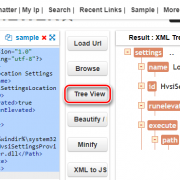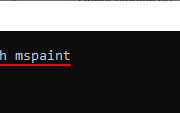Главные секреты планировщика ключевых слов google
Содержание:
- Getting Estimates and Reviewing Your Keyword Plan
- Статистика
- Значение показателей за прошедший период
- Инструкции
- Что такое планировщик ключевых слов Google Ads?
- List View vs. Grouped View and “Your Keyword Plan”
- Searching for Keyword and Ad Group Ideas Using Keyword Planner
- Reports and data
- Онлайн-сервисы для сбора семантического ядра
- Google Keyword Planner vs. Keyword Magic Tool
- Using Google Keyword Planner for PPC
- How to Use the Google Keyword Planner
- Gaining Access to Google Keyword Planner – The First Hurdle
- Step 1: Access Google Keyword Planner with Google Adwords
- Using Google Keyword Planner for SEO
Getting Estimates and Reviewing Your Keyword Plan
The next step of the Keyword Plan process involves setting a keyword bid and daily budget for your portfolio of keywords and keyword groupings.
Since keyword volume and CPC bid estimates vary wildly based on your budget, bid, location, and other factors, it’s important that you provide Google with some information to customize your estimates.
For example, you could enter in a bid of $40 and a daily budget of $1,000.00 and based on those settings, the Keyword Planner will generate detailed daily estimates for clicks, impressions, average ad position, and costs, as shown here.

AdWords Keyword Planner’s generated daily estimates.
Статистика
В Планировщике ключевых слов можно посмотреть таблицу с подробной статистикой по ключевым словам и кампаниям. Эти данные помогут вам при подборе ключевых слов
Обратите внимание, что показатели за прошедший период, в отличие от прогнозов, не учитывают ставку, бюджет, время года и другие факторы
Значение показателей за прошедший период
Среднее число запросов в месяц. Среднее количество запросов с ключевым словом и близкими к нему вариантами при выбранных настройках поисковой сети, местоположения и диапазона дат. Используется для оценки эффективности ключевых слов в разные периоды. По умолчанию количество поисковых запросов (вне зависимости от языка) приводится за 12 месяцев.
Уровень конкуренции. Популярность ключевого слова, а именно отношение количества рекламодателей, использующих это ключевое слово, к общему количеству ключевых слов в Google. Показатель учитывает местоположение и настройки таргетинга в поисковой сети. В столбце показан уровень конкуренции (низкий, средний или высокий) за это ключевое слово.
Ставка для показа вверху страницы (мин.). Величина, превышающая примерно 20 % наименьших ставок, при которых объявления показывались вверху страницы (согласно статистике для всех рекламодателей). Показатель учитывает местоположение и настройки таргетинга в поисковой сети.
Ставка для показа вверху страницы (макс.). Величина, превышающая примерно 80 % наименьших ставок, при которых объявления показывались вверху страницы (согласно статистике для всех рекламодателей). Показатель учитывает местоположение и настройки таргетинга в поисковой сети.
Процент полученных показов (обычный поиск). Процент показов ссылки на ваш сайт при поиске по определенному ключевому слову. Рассчитывается путем деления числа поисковых запросов, по которым был показан сайт, на общее количество запросов по этому ключевому слову.
Процент полученных показов. Отношение количества полученных показов к общему числу поисковых запросов, точно соответствующих ключевому слову и выбранным настройкам таргетинга, за последний календарный месяц
Обратите внимание, что значения в этом столбце Планировщика ключевых слов отличаются от значений в столбцах «Процент полученных показов» и «Процент показов по ключевым словам с точным соответствием» на странице управления кампаниями. Они основаны на общем числе показов по ключевому слову, которые вы могли получить, а процент полученных показов в Планировщике ключевых слов – на количестве запросов конкретного ключевого слова
Если данных для расчета недостаточно, в столбце «Процент полученных показов» будет прочерк.
Что следует учитывать при анализе показателей за прошедший период
Мы округляем статистику количества запросов. Это означает, что если вы получите варианты ключевых слов для нескольких местоположений, то итоговое количество запросов может не соответствовать сумме запросов для отдельных местоположений.
Активность пользователей в Интернете зависит от времени года, текущих событий и ряда других факторов, а потому количество поисковых запросов по ключевым словам постоянно меняется.
Прогнозы по ключевым словам помогают оценить эффективность
При расчете количества показов принимаются во внимание ставка, бюджет, время года и статистика качества объявления, но не статистика количества запросов. Кроме того, количество запросов определяется только для ключевых слов с точным соответствием, тогда как расчетное количество показов зависит от выбранных вами типов соответствия.
Статистика диапазона ставок помогает понять, какие ключевые слова стоит использовать в кампании
Эта статистика, представленная показателями «Ставка для показа вверху страницы (мин.)» и «Ставка для показа вверху страницы (макс.)», также помогает выбрать эффективные ставки для ключевых слов. Она основана на фактических ставках, при которых объявления появлялись в верхней части первой страницы результатов поиска.
Статистика диапазона ставок включает данные за последние 30 дней. Учтите, что статистика диапазона ставок может отсутствовать для ключевых слов, по которым недостаточно данных. Показ объявления в верхней части первой страницы результатов поиска зависит от ряда факторов, например ставки и показателя качества, следовательно эти параметры можно использовать для корректировки ставок с учетом показателя качества похожих ключевых слов.
Инструкции
1. Отфильтруйте и уточните результаты по категориям
Отфильтровав результаты, вы сможете точнее оценить эффективность отдельных вариантов ключевых слов. Чтобы воспользоваться этой функцией, нажмите на значок фильтра над таблицей и выберите фильтр, который нужно изменить.
Вы можете фильтровать результаты по тексту ключевых слов, среднему количеству поисковых запросов в месяц, минимальной и максимальной ставке для показа вверху страницы, уровню конкуренции, проценту полученных показов в обычных результатах поиска и проценту полученных показов объявлений. Вы также можете исключить ключевые слова, которые уже используются в вашем аккаунте.
Список можно фильтровать и по категориям, связанным с вашими вариантами ключевых слов. Например, если ключевое слово связано с обувью для бега, может предлагаться категория «цвет обуви».
По умолчанию выбраны все категории. Чтобы сузить поиск, снимите флажки возле ненужных категорий.
2. Оставьте ключевые слова, которые актуальны для вашего местоположения
Рассмотрим применение настроек таргетинга на примере. Допустим, вы хотите показывать рекламу курорта в Краснодарском крае русскоговорящей аудитории Google и поисковых партнеров в Белоруссии. Измените настройки на панели «Таргетинг» над диаграммой, чтобы получить варианты ключевых слов и статистические данные для такой кампании.
- Местоположения. Укажите в соответствующем поле географическое местоположение: страну, регион, город. Если вы нажмете «Поблизости», то получите варианты для местоположений, которые находятся неподалеку от указанного вами. Чтобы настроить глобальный таргетинг и задать настройку «Все местоположения», удалите ранее введенные местоположения.
- Языки. Укажите в соответствующем поле нужный язык или выберите его из списка.
- Настройки размещения. Выберите «Google», чтобы посмотреть варианты для Google Поиска, или «Google и поисковые партнеры», чтобы увидеть варианты и для других поисковых ресурсов Google, например Карт, а также для сайтов наших партнеров.
3. Настройте диапазон дат
При работе с сезонными кампаниями и поиске популярных ключевых слов важно учитывать даты. В Планировщике можно просматривать динамику объемов поисковых запросов и варианты ключевых слов с учетом указанного вами периода времени
4. Учитывайте сезонные тенденции
Допустим, ваша компания занимается доставкой цветов. По данным статистики, наибольшую популярность ваши ключевые слова имели в начале марта, в преддверии Международного женского дня. Чтобы найти другие эффективные варианты для этого времени, выберите его в соответствующем поле над диаграммой.
Кроме того, эта функция поможет вам оценить трафик за нужный период и лучше подготовиться к определенным событиям, например запланировать в феврале рекламную кампанию по доставке цветов к Дню святого Валентина.
5. Разбейте варианты ключевых слов на сегменты
Вы можете посмотреть эффективность ключевых слов для определенных сегментов аудитории. Возможные варианты разбивки:
- Динамика для мобильных устройств. Сравните тенденции поиска на мобильных устройствах с аналогичным показателем для всех устройств.
- Разбить по устройствам. На диаграмме будет представлено среднее количество запросов в месяц с разных типов устройств: компьютеров, смартфонов и планшетов с полнофункциональными браузерами.
- Разбить по местоположениям. На диаграмме будет показано, сколько кликов получают ваши ключевые слова в каждом целевом местоположении.
Примечание
Чтобы получить варианты ключевых слов на основе содержания всего сайта, а не только указанной страницы, необходимо добавить и подтвердить свой сайт. Владельцы управляемых аккаунтов должны выполнить эту процедуру самостоятельно. После того, как вы подтвердите сайт, может пройти до одного месяца, прежде чем начнут появляться варианты ключевых слов на основе содержания всего сайта.
Что такое планировщик ключевых слов Google Ads?
Одно дело знать, что сейчас в тренде .
Это ценный актив для любого цифрового маркетолога.
Но как насчет того, что будет в тренде завтра или дальше в будущем?
Как ты вообще можешь это предсказывать?
Инструмент прогнозирования ключевых слов Google Ads делает именно это.
Это отличный вариант для тех, кто хочет улучшить свою рекламную или SEO стратегию, сузив будущий потенциал для любых ключевых слов или групп ключевых слов.
По данным Google, они ежедневно обновляют свои прогнозы, используя данные за последние 10 дней.
Эти данные включают в себя рыночные изменения, которые произошли за это время.
Он также учитывает сезонность, поэтому вас не смущают естественные колебания рынка.
Короче говоря, прогноз ключевых слов Google Ads-довольно классный инструмент.
List View vs. Grouped View and “Your Keyword Plan”
Keywords in the Keyword Planner appear either in list view or in grouped view, which is sort of analogous to the concept of keyword niches and keyword lists that we’ve long supported in WordStream’s own keyword tools.
Additionally, you can add individual keywords or keyword groupings to “Your Plan,” which is sort of a temporary storage area for saving interesting-looking keywords and keyword groupings for later.
The Keyword Planner maintains state for the duration of your session – keywords that you add are saved while you’re in the process of looking for keywords.
Finally, when you’re done finding keywords, click on the “Get Estimates and Review Plan” button.
Searching for Keyword and Ad Group Ideas Using Keyword Planner
Adding keywords to your account based on Google suggested keywords is the primary use case. The Keyword Planner (illustrated below), provides a robust keyword workbench for researching and picking keywords to add to your AdWords account.

AdWords Keyword Planner User Interface.
Using the Keyword Planner Tool you can:
- Look for keyword and ad group ideas: Brainstorm keyword ideas based on individual keyword ideas, or based on your landing page, a product category, or any combination of the above.
- View keyword statistics and performance estimates: Specify targeting options that you select such as country, language and search network to inform your keyword estimates.
- Filter keywords: You can narrow your keyword list based on various criteria, such as average CPC and average monthly search volume. You can also include or exclude keywords containing specific terms, and exclude keywords that are already in your AdWords account.
Please note that AdWord’s Keyword Planner returns exact match search traffic. For phrase and broad match search traffic, try these Google Keyword Planner tips.
Reports and data
The two features will direct you to two different Keyword Plan pages that look similar but serve different functions.
Find new keywords plan page
This is where you’ll discover new keywords to add to your Google Ads account campaigns.
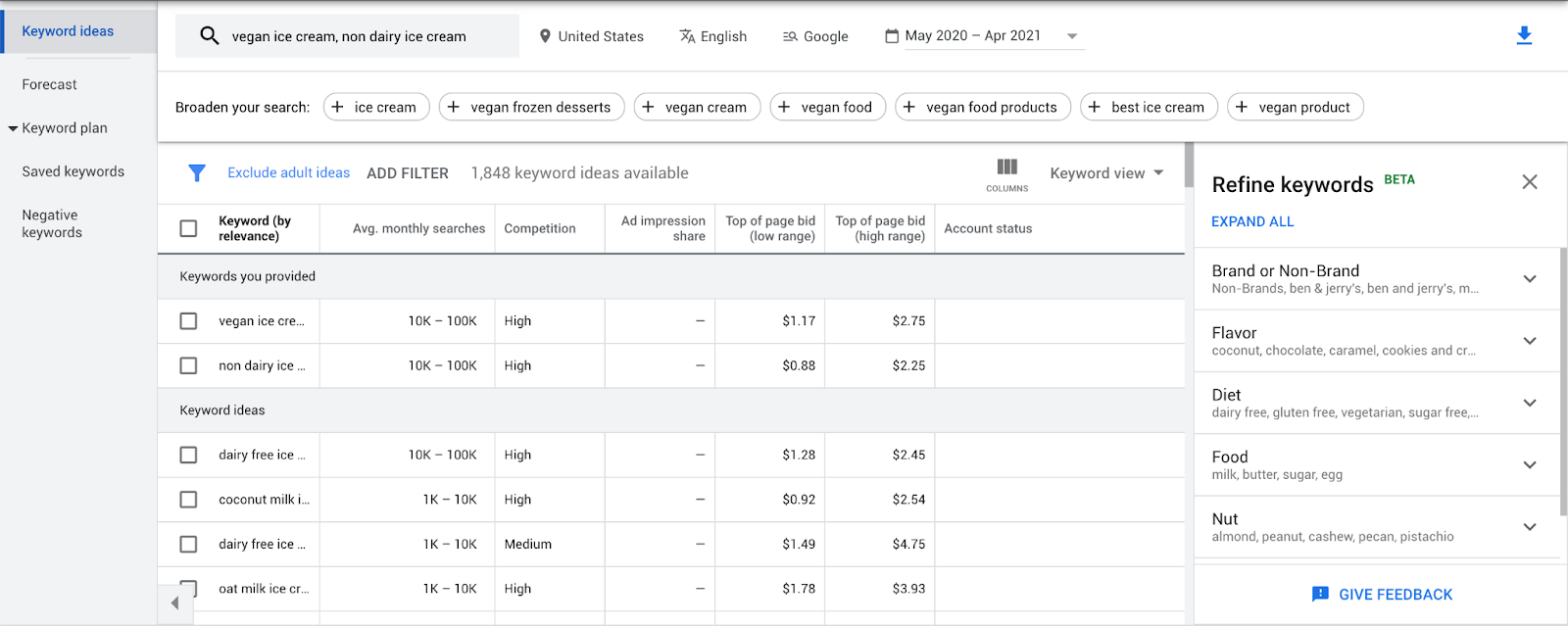 Add some keywords to see keyword ideas generated by the GKP
Add some keywords to see keyword ideas generated by the GKP
Date adjustments
Adjust the date in the top right to focus on any range you want to report on. It comes with default times like last month or the last 12 months as well as a custom date option.
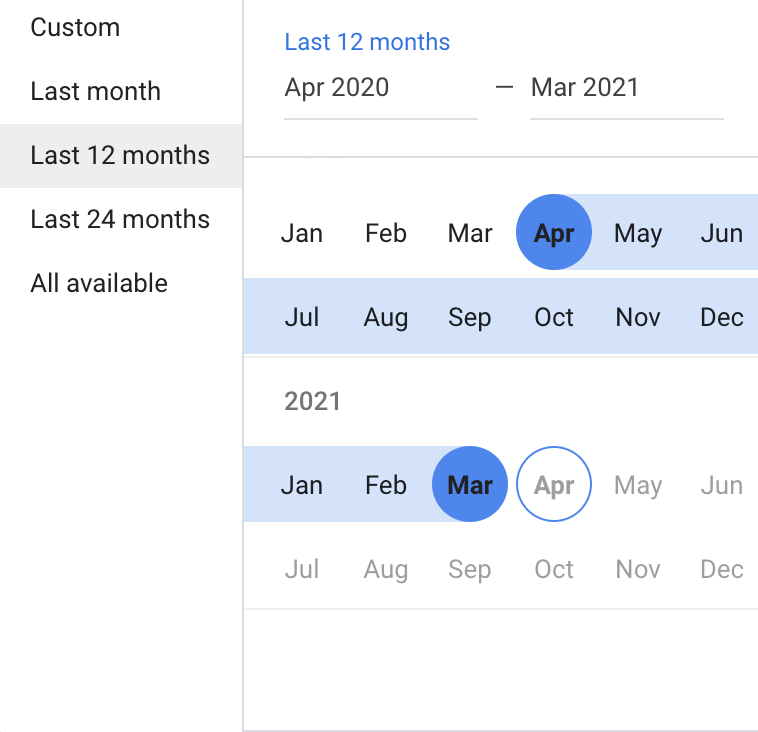 Adjust the date range
Adjust the date range
Plan settings
If you’re thinking about researching other areas to expand your reach, you can adjust the location to get new insights.
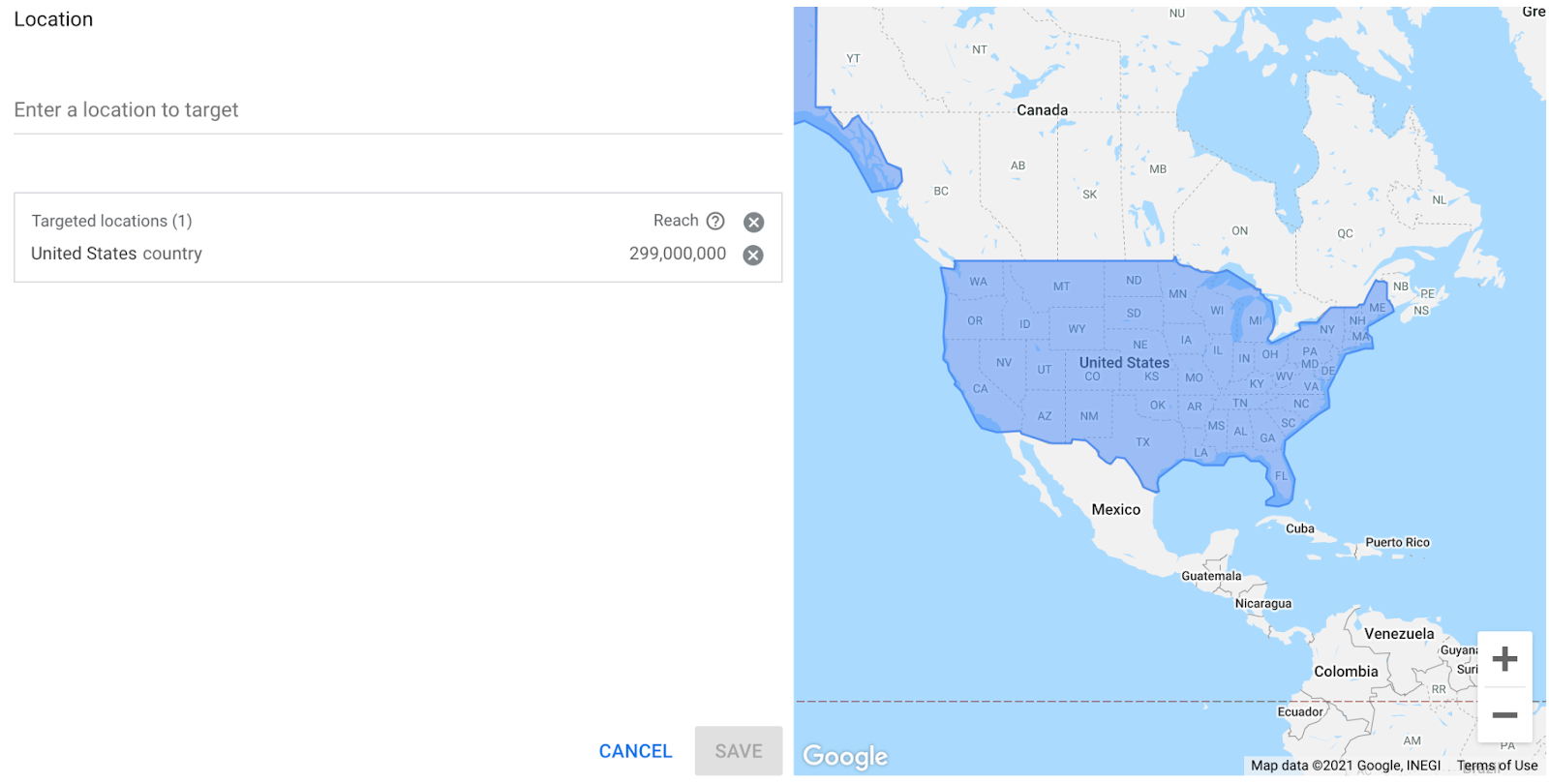 Change your location
Change your location
Simply click on the pencil icon, search for the city that you’d like to see results for and save the settings. The same process would apply for the other settings, “Language” and “Search Networks”.
Bar graph
This bar graph automatically shows up on the Keyword Planner page. It shows the average monthly search volume from the keywords you inputted within a date range.
 Keyword ideas to broaden your search
Keyword ideas to broaden your search
You can change the date range at the top right-hand corner if need be. You can hover your cursor on top of the bars to see the exact average number for each month.
A cool addition to this chart is the dropdown menu at the top left of the bar graph that gives you more trends to do your research on.
- Keyword search volume trends
- Breakdown by platforms
- Location-based breakdowns
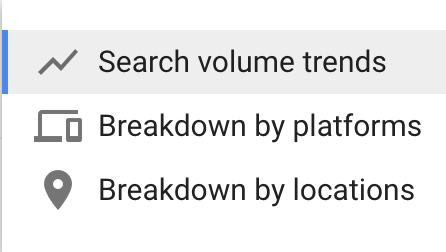 How do you want your breakdown?
How do you want your breakdown?
Breakdown by device
If you’re curious about which device to target, take a look at the device metric. In this example, it looks like the mobile devices have the win.
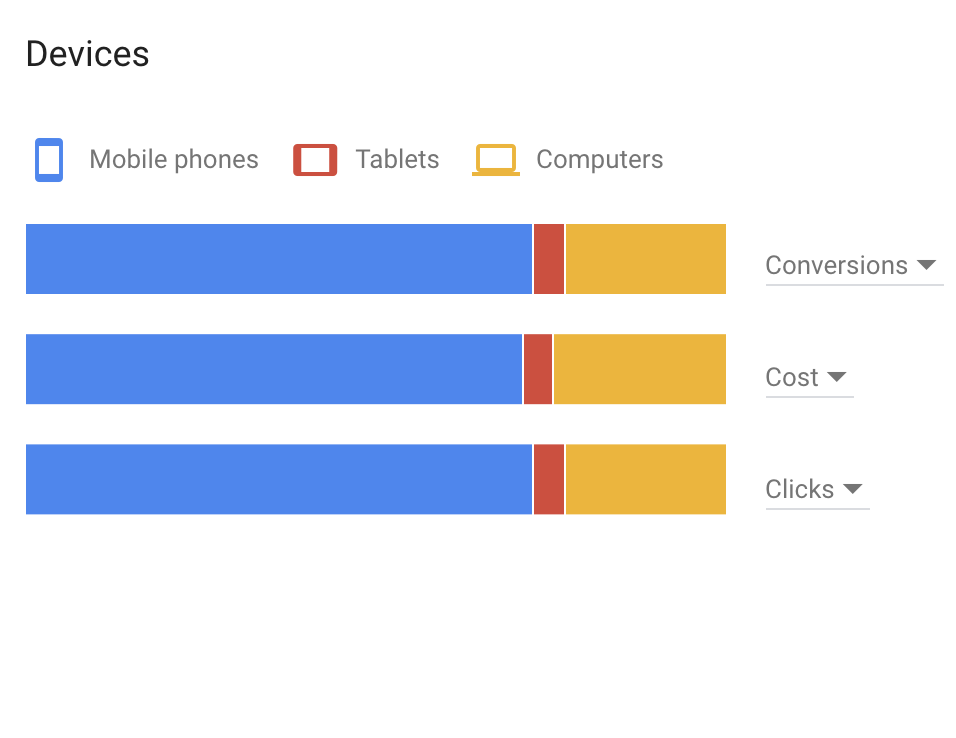 Breakdown by device
Breakdown by device
Breakdown by location
All businesses have a targeted location that they want to focus on. But that doesn’t mean there aren’t opportunities elsewhere. Break things down by country, state, or city and see if there are unexplored areas that show demand for your product.
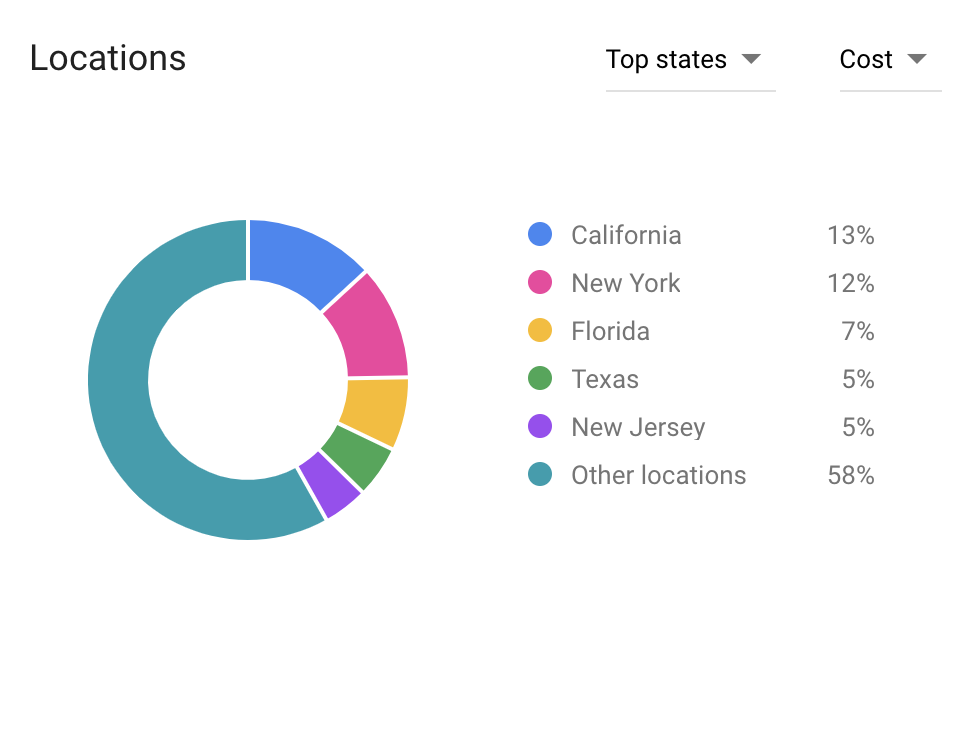 Instead of targeting the entire country, break things down to where the most intent is shown.
Instead of targeting the entire country, break things down to where the most intent is shown.
Онлайн-сервисы для сбора семантического ядра
Яндекс.Вордстат
Всем известный сервис для анализа поисковых запросов в Яндексе, который мы упоминали выше. В нём есть возможность смотреть статистику поисковой фразы по регионам, похожие поисковые запросы и историю запросов в разрезе года.
Кстати, вы можете установить расширение для браузера «Yandex Wordstat Assistant», которое позволит значительно ускорить ручной сбор слов из Яндекс Wordstat. С его помощью вы сможете одним кликом выбрать все ключевые слова на странице и копировать их в буфер обмена.
Keyword Tool
Бесплатная версия Keyword Tool генерирует до 750 + ключевых слов для каждого поискового запроса. Собирает поисковые подсказки, частотность и может анализировать домены конкурентов.
Из фишек — кроме Google, сервис собирает фразы из Bing, eBay, AppStore, Amazon и YouTube.
Rush-analytics
Сервис, в основном, предназначен для группировки поисковых запросов. При этом, он справляется с большими объёмами данных, экономя временные затраты вебмастеров. Также есть возможность сбора ключевых слов и поисковых подсказок из Яндекса.
Но сервис платный, стоимость использования начинается от 999 рублей в месяц.
Keyso.so
Инструмент для анализа поисковых запросов, в котором также есть бесплатная версия, в которой вы найдёте дополняющие фразы, базы запросов, сравнение сайтов, чистку неявных дублей, анализ конкурентов по фразам и так далее. Инструмент работает для русскоязычного интернета, поэтому сбор семантики происходит из Яндекса и Google. Стоимость платного тарифа начинается от 1 500 тысяч в месяц.
Google Trends
С помощью Google Trends можно проанализировать популярность поискового запроса по городам или регионам. Очень удобно для тех, чей бизнес специализируется на одном городе, чтобы посмотреть похожие запросы и сравнить свою компанию с конкурентом.
Из интересного в Google Trends:
- Отдельное табло, показывающее степень популярности выбранного поискового запроса. В него можно добавить несколько ключей и сравнить, какие ищут чаще.
- Поиск ключевых запросов в YouTube.
Букварикс
На сайте есть простой подбор слов (поиск по одному слову) и расширенный (поиск по списку ключевых слов). Сервис поможет найти семантическое ядро конкурентов, собирать частотность запросов, группировать словоформы при анализе уникальных слов.
Из ограничений бесплатной версии: возможность выгружать не более 3 000 ключевых слов
Just-magic
Платный набор инструментов, предназначенных для работы с семантическим ядром. В нем можно собирать ключевые запросы, анализировать написанный текст на вхождение ключевиков и анализировать текст на соответствие тематики
Сервис привязан к поисковой системе Яндекса, а значит, его использование будет наиболее эффективным для продвижения именно в этом поисковике.
Стоимость использования: от 1 000 в месяц.
KWFinder
Наиболее простой в освоении инструмент для работы с ключевыми запросами.
Людям, создавшим интерфейс KWFinder, нужно выдать дополнительную премию за их желание создавать «человеческий» продукт. Например, KWFinder оценивает сложность продвижения по каждому найденному ключу и показывает это значение прямо в списке находок, напротив каждого слова. Если вы хорошо владеете английским языком — обязательно попробуйте этот сервис (тем более там есть бесплатная 10-дневная версия).
Ubersuggest
Бесплатная программа Ubersuggest — отличный помощник SEO-специалиста.
Она:
- Собирает все «стандартные» показатели, необходимые для адекватной оценки пригодности ключевых слов.
- Показывает информацию о поисковых запросах, используемых для продвижения конкурентами.
- Даёт подсказки по работе с обратными ссылками.
- Рассказывает о других интересах пользователей, использующих искомые ключевые слова.
- Показывает степень перспективности искомых ключей.
Из минусов — отсутствие русского языка.
⌘⌘⌘
Надеемся, что этот обзор поможет вам найти идеальный инструмент для работы с ключевыми словами!
А если вы только думаете создать сайт — сделайте это с помощью нашего сервиса REG.Site. Принцип работы прост — вы выбираете шаблон будущего сайта и редактируете его внешний вид под себя: добавляете элементы дизайна, настраиваете размеры, цвета и добавляете текст (со всеми собранными SEO-словами). Хостинг уже включён в решение, а SSL-сертификат идёт в подарок ;).
Google Keyword Planner vs. Keyword Magic Tool
Google Keyword Planner isn’t the right tool for everyone. It is a great resource and one which is used daily by marketers around the world, but there is an alternative that you may not have considered. Our own Keyword Magic Tool is, as far as we are concerned, the most effective way to do keyword research:
-
From a seed keyword, you get more than 20 million keyword ideas to choose from, all of which can be filtered by search volume, keyword difficulty, competitive density, SERP features, and CPC insights data. Some of these filter options simply aren’t available from Google’s own tool.
-
You can easily segment keywords by topic, instantly finding the right keywords for your campaign. If you are looking for long-tail keywords, you can find many more opportunities with Keyword Magic Tool than you would with Keyword Planner.
-
Identify the best keywords for your campaign and send up to 1,000 to the Keyword Manager, compiling them all into a single listing with their key metrics, while estimating the traffic potential for your website.
-
You can then send your keyword list straight to Semrush Position Tracking, saving you time when analyzing performance. As a bonus, you can integrate this list with the Semrush PPC Keyword Tool to help you easily build a successful Google Ads campaign.
Using Google Keyword Planner for PPC
If you are planning to launch or build-out a PPC campaign on Google Ads, it won’t come as a surprise that Keyword Planner offers a hive of data to help you to plan and forecast campaign performance. Rather than launching a campaign blind, you have access to a toolset to help you make informed decisions.
How to Forecast Google Ads Campaign Performance
When you are about to launch a Google Ads campaign, you can ‘get search volume and forecasts’ to give you the insights needed to understand the potential impact — from clicks to costs.
Here is how to use Keyword Planner to forecast your PPC campaigns.
Step 1: You will need a list of keywords to forecast. You can either build this out when you ‘discover new keywords’ through the tool or use an existing list that you have put together. Without a list, you won’t be able to forecast.
We will stick with our fictional clothing retailer, here, forecasting for a campaign with the goal of selling party dresses.
Note: you can either enter keywords individually or upload a .csv file.
Step 2: You should now see a forecast against the keywords you entered or uploaded. You won’t see any keyword ideas here, rather an insight into how your campaign (and keywords) are expected to perform. First, you will see these insights grouped as a campaign:
This data is a great way to understand the estimated number of clicks and impressions which your campaign should receive over a 30 day period, as well as a projected cost and recommended daily budget. You will also see the expected CTR (click-through rate), average CPC, and the average position searchers will see your ads in.
To take your research to the next level and understand the commercial impact, you can ‘add conversion metrics’ by simply entering your expected conversion rate and value.
You will then see a forecast on the expected performance and returns of your campaign.
Some truth — you simply cannot launch a Google Ads campaign successfully without this data. It allows you to identify the keywords which are expected to be profitable and those which aren’t. Don’t launch campaigns blind when this data is available, for free.
Additionally, you will see these same metrics broken down at keyword level:
Notice that the click and impression estimates here are a lot more specific? This is because the data is based on a maximum CPC of £2, here. Notice how these figures change when we edit the Max CPC to be £1?
Be careful not to take the clicks figure as estimated organic traffic; we are running forecasts for a PPC campaign here.
How to Find Negative Keywords
No one likes to waste money, but the reality is that it is not uncommon for Google Ads campaigns to waste or lose money when negative keywords aren’t identified correctly Keyword Planner is great for doing this.
For those of you not familiar with what a negative keyword is, think of it as the exact opposite of a keyword you are targeting. It is a search term which stops your ad from showing when someone searches for it, rather than one which triggers the ad.
You may think that Keyword Planner should only be used to find keywords you want to use to show your ads, but that is not the case. Going back to our example of ‘party dresses,’ you will see the keyword suggestions returning terms like ‘kids party dresses.’ But what if you don’t sell kids clothing? It is simple — you add it to your campaign as a negative keyword to stop your ads from showing for it.
This is very much a manual process, but it is an effective way to make sure you are not wasting money on a campaign before it has even launched.
How to Use the Google Keyword Planner
Solid keyword research underpins every successful SEO and PPC strategy. After all, to drive increased traffic from Google, or to run a profitable Google Ads campaign, you need to know what your audience is searching for and base your growth strategy around this.
If you don’t know how searchers are looking for the products you sell, the services you offer, or the information and expertise which you are sharing, you are working blind.
And while it is by no means the only keyword research tool out there, it is a great starting point. Here, we will share everything you need to know about Keyword Planner. Including how you can get started with the tool, how to analyze the data to use in your campaigns, and even a couple of hacks to help you work around some of the common frustrations users have with it.
Keyword Magic Tool
An Easy-to-Use Keyword Research Tool for SEO and PPC
Start Free Trial →
Start Free Trial →
We will even walk you through the different ways to use the tool, depending on whether you are using it to steer your SEO strategy or to build out the foundations of your PPC campaign.
Here’s everything we are going to cover in this guide:
Gaining Access to Google Keyword Planner – The First Hurdle
In all likelihood, you have not run an AdWords campaign before. If you have, you can skip this part, because you will have access to GKP.
For those who haven’t run any AdWords campaign earlier, Google may persistently ask to set up an AdWords campaign before you can access the tool.
You will have to create an account with Google Ads and use your Gmail ID.
Once you create an account, Google will ask you the goal of advertising.
This is what you may see:

It may look like a roadblock and you may think that there is no way to access the tool.
You are wrong!
See that blue link below which says Switch to Expert Mode?
Click on that!
The next thing you will see is this:

It still asks you to define the goal.
What now?
See that small link that says ‘Create an account without a campaign?’
Click on that!
On the next screen, you need to provide the business information.
Essentially, you need to provide your billing country, time zone, and billing currency.

Don’t worry, Google isn’t going to ask for your credit card details.
Provide the information and hit the submit button.
The next thing you will notice is this:

Yes, your account has been created, and you didn’t have to create an ad campaign.
Now, click on Explore Your Account button to get access to Google Ads (previously known as AdWords) account. This is what you will see:

Yes, yes, you are right in the place where you need to be to access Google Keyword Planner.
You see that small wrench icon on the top?
Click on it to pull out the mega menu. There you can see the Keyword Planner.

Click on it!
And this is what you get:

Ladies and gentlemen, I present to you the mysterious Google Keyword Planner!
You have now crossed the first hurdle.
Congratulations! You are now a half-pro SEO. You are now on your way to become a full pro!
Step 1: Access Google Keyword Planner with Google Adwords
It is necessary to register with Google Adwords to get access to Google Keyword Planner. You can register on Google Adwords with your Gmail account or create a new one. Just make sure to enter your correct details at the time of creation; you won’t be able to change them later.
Now follow these steps to access Keyword Planner:
Login to Google Adwords.
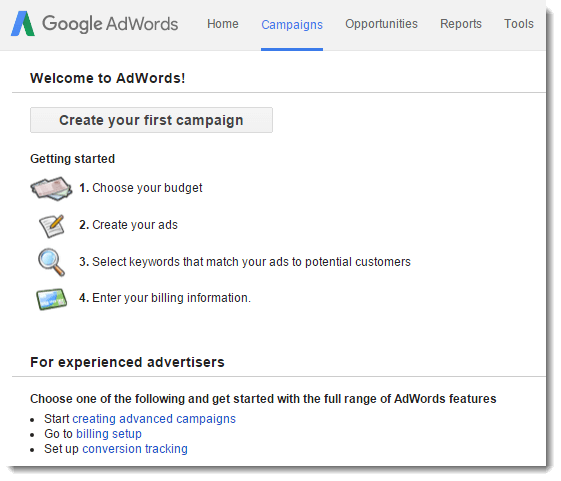
Go to Tools section and select “Keyword Planner”.
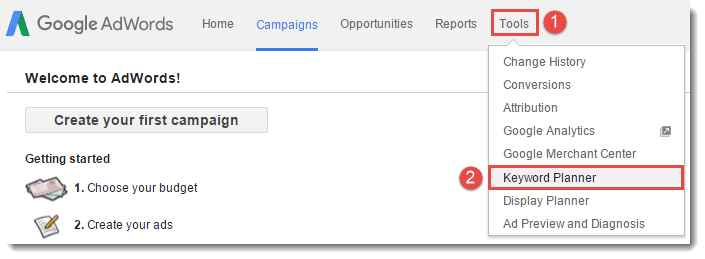
Now you will be offered two sections by Google Keyword Tool.
- Find new keywords and get search volume data
- Plan your budget and get forecasts
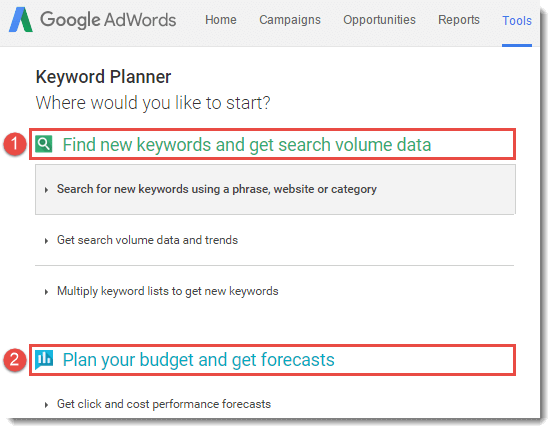
- You’re concerned with only the first section (Find new keywords and get search volume data). The second section (Plan your budget and get forecasts) applies to Adwords Advertisers only.
- 1st section (Find new keywords and get search volume data) is further divided into three options that we will discuss in this guide.
- Search for new Keywords using a phrase, website or category
- Get search volume data and trends
- Multiply Keyword lists to get new keywords
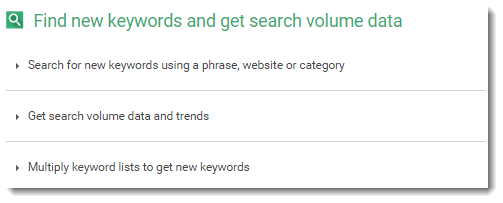
Now you’ll learn how to use these three options to find profitable keywords for your business.
Using Google Keyword Planner for SEO
Despite this specific keyword tool being intended, at least as far as Google themselves are concerned, as one aimed primarily at those running Google Ads, it is a powerful SEO tool and a resource that is perfect for helping you identify the keywords you need to be ranking for.
How to Find New Keywords
The reason why most SEOs are using Keyword Planner is to find new keywords; either at the start of a campaign to help steer a strategy by identifying the specific terms an audience are using to find businesses just like yours, or as a way to identify opportunities to create and rank, new content. Either way, finding keyword ideas is easy and simple.
Step 1: Click into ‘discover new keywords’, and you will be met with two tabbed options, either to ‘start with keywords’ or ‘start with a website.’
We will start with keywords, looking to find opportunities for a women’s online fashion retailer.
Step 2: As simple as it sounds, “Enter products or services closely related to your business.” You also have an opportunity here to choose the language and location, and to choose whether or not you want to include brand names in the results. Should you need to, you can also enter your site’s domain to filter our services, products, or brands that you don’t offer. Usually, it is best not filtering results at this stage.
If you want to enter multiple keywords, you can do so by separating with commas. You will be able to enter up to ten different keywords at once.
In this example, we start with a search for ‘dresses.’ It is often hard to find a starting point, but a word of advice here is to start with broader keywords that summarise your key services or products to return the highest number of opportunities.
Alternatively, rather than starting with your own keyword ideas, you can start with a website and enter your domain, or a specific page.
Step 3: You will see a bunch of keyword ideas returned, sorted in the first instance by ‘relevance.’ We see when searching for ‘dresses,’ 1,591 keyword ideas presented, which, as you can see, quickly lets you identify opportunities and see how people are searching.
As well as seeing a list of keyword ideas which are related to the keyword you provided, you will see a number of other columns which provide data into the average number of months searches, the level of (paid) competition, the ad impression share, and top of page bid estimates (low range and high range).
Try entering different starting keywords to find keyword ideas that go more specific. If we start with ‘party dresses’ rather than the broader keyword of ‘dresses,’ we get:
There are fewer keyword ideas in the example above, but notice how they are more specific?
It is a great example to showcase the power of the tool, helping you to find opportunities. Starting with ‘party dresses’, you can quickly see that there are also people searching for variations like ‘going out dresses’ and longer-tail keywords like ‘plus size party dresses’ and ‘white party dresses.’
The more insight you have into how your customers are searching, the better chance you have to meet their needs; this a perfect example as to how keyword research can impact so much more than search and play an instrumental part in purchasing stock or launching new products.
Top Tip:
Remember how you can also start with a domain or web page? To find further ideas you have identified by starting with keywords, enter your competitor’s domains. What better way to find those keywords than competitor insight?
Don’t forget, you can be specific here. Try using a competitor’s site pages, rather than the root domain, to discover new keyword ideas.
At this stage, you have probably noticed that the ‘average monthly searches’ are displayed only as a range.
For the keyword ‘party dresses,’ this is given as 100K–1M. That is a huge difference, with the upper end ten times that of the lower. Back in , Google moved from showing accurate search volume metrics to returning data ranges for those users who were logged in to a Google account but did not have an ad campaign running.
Keep reading, and we will show you how to unlock more specific keyword volumes if you are not running Google Ads.




